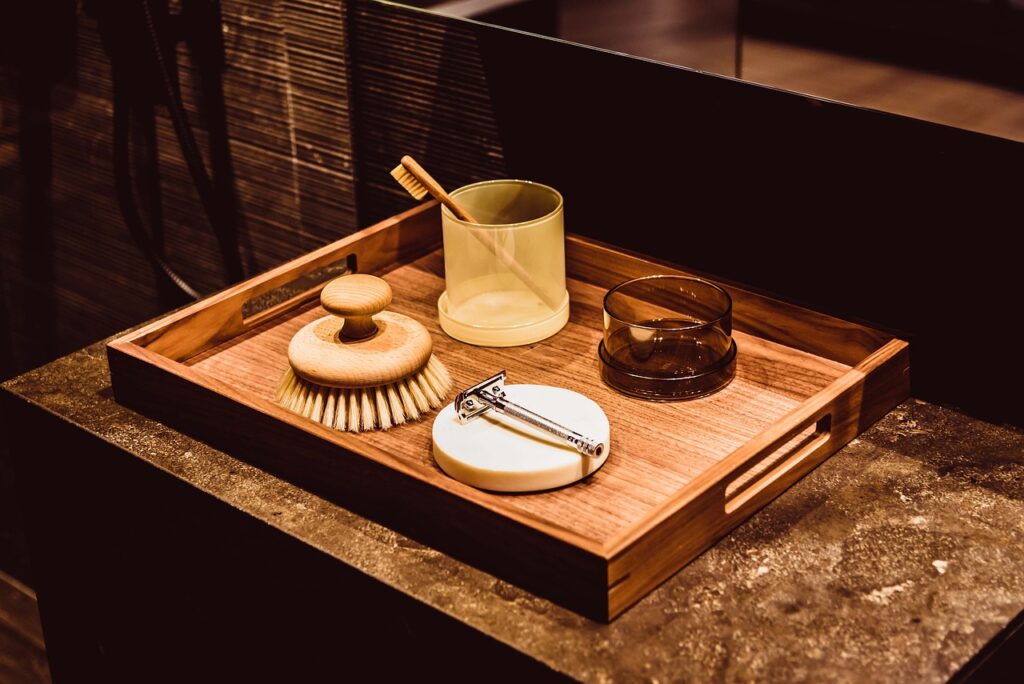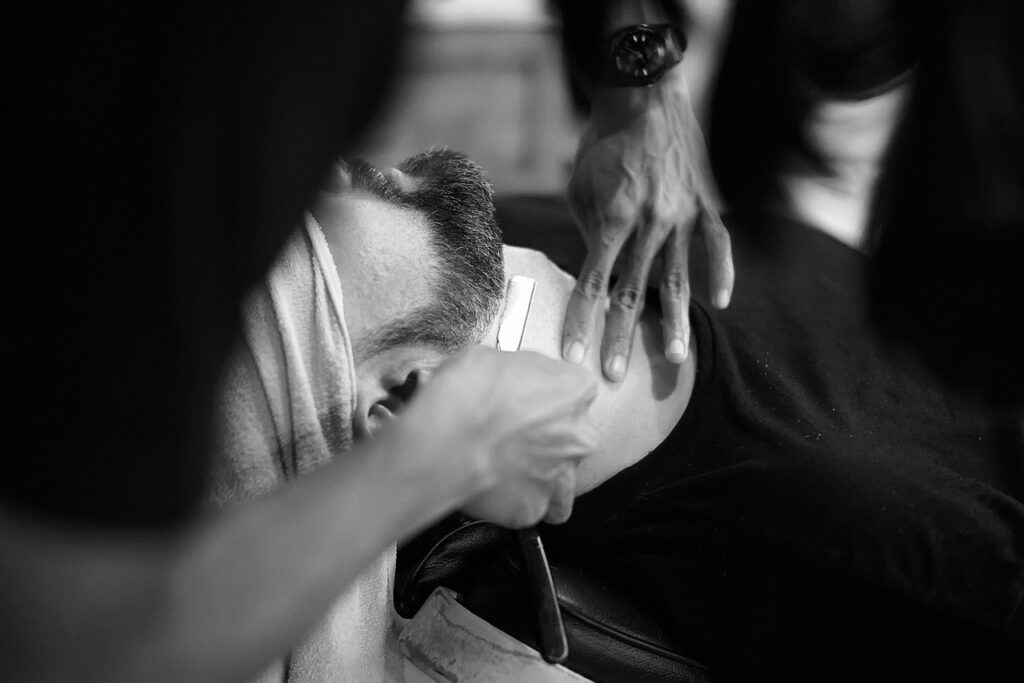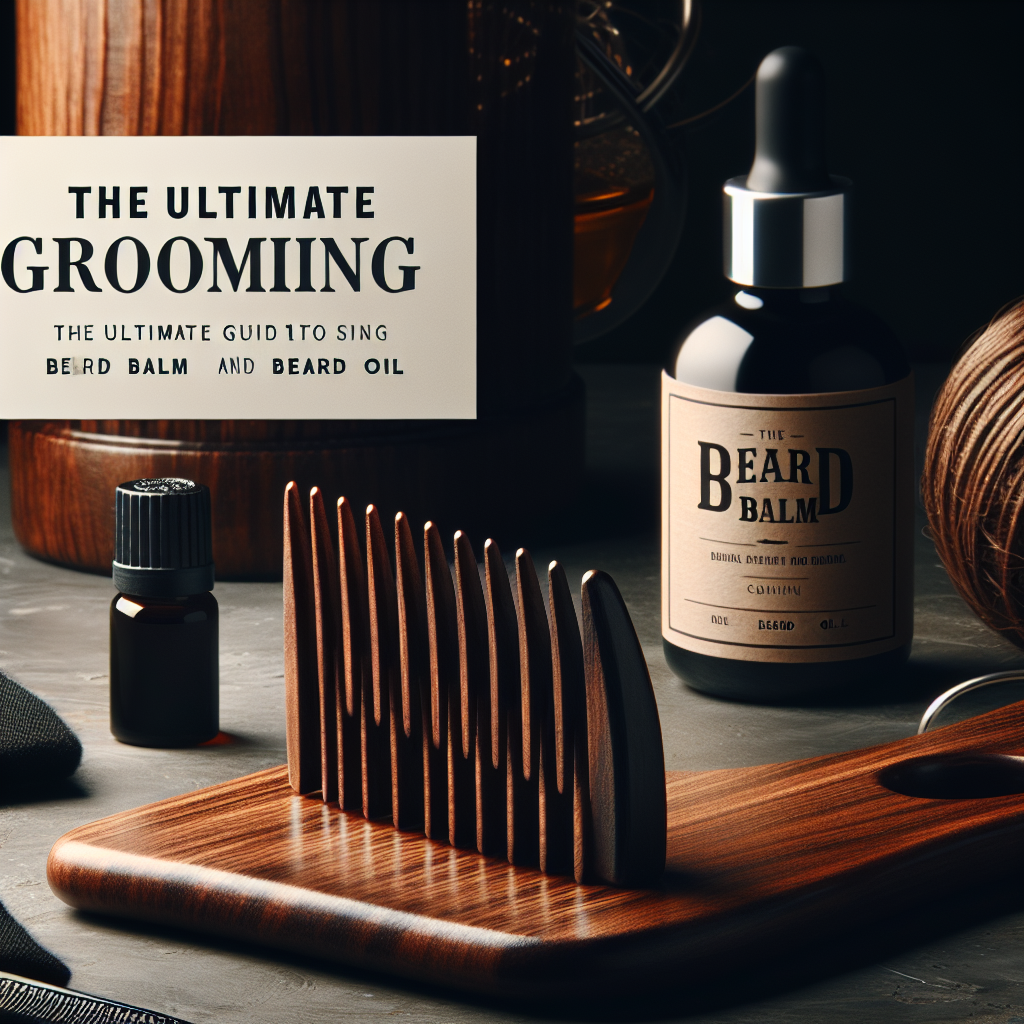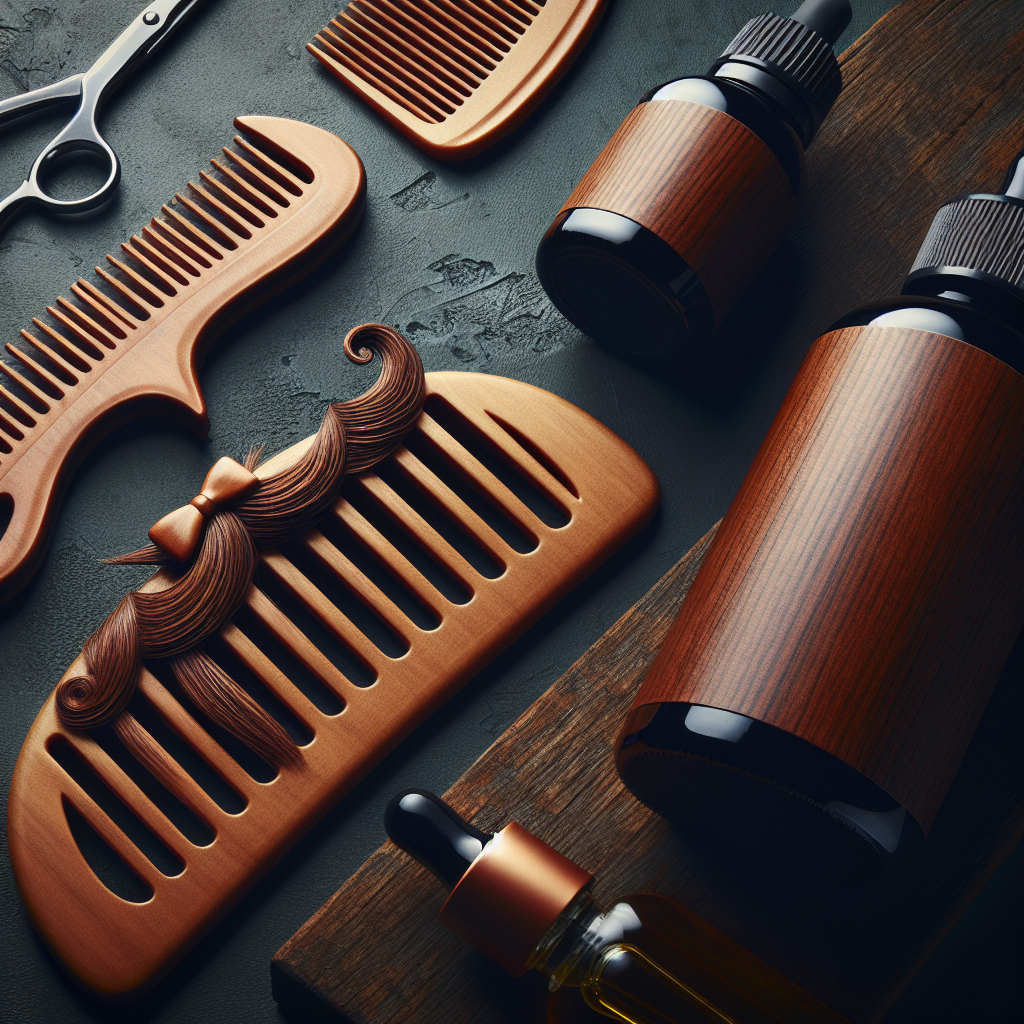In your quest for a well-groomed and magnificent beard, the use of beard balm and beard oil can work wonders. But what exactly are these magical potions? Fear not, for this ultimate guide is here to demystify their usage and help you achieve the ultimate beard care routine. From taming unruly facial hair to nourishing the skin beneath, we will explore the ins and outs of using these products effectively. So grab your comb and get ready to embark on a journey to beard perfection!

What is Beard Balm?
Beard balm is a grooming product specifically formulated for the care and maintenance of facial hair. It is typically made from a blend of natural ingredients, such as shea butter, beeswax, carrier oils, and essential oils. The main purpose of beard balm is to moisturize and nourish both the beard hair and the underlying skin, providing hydration and promoting a healthier, more manageable beard.
Ingredients of Beard Balm
The ingredients found in beard balm can vary depending on the brand and formulation, but there are a few key components that are commonly used.
-
Shea Butter: This natural moisturizer helps to soften and condition the beard hair, making it more manageable and reducing the occurrence of tangles and knots.
-
Beeswax: Beeswax is responsible for providing a light to medium hold, keeping the beard in place and aiding in styling. It also acts as a natural sealant, locking in moisture and protecting the hair from environmental factors.
-
Carrier Oils: Carrier oils, such as jojoba oil, argan oil, and sweet almond oil, are used to dilute essential oils and provide additional nourishment to both the hair and skin. These oils are rich in vitamins and fatty acids, which help to moisturize, soothe irritation, and promote healthy hair growth.
-
Essential Oils: Essential oils are used to add a pleasant scent to beard balm. They also offer additional benefits, such as antimicrobial properties or skin-soothing effects. Common essential oils used in beard balm include cedarwood, sandalwood, and peppermint.
Benefits of using Beard Balm
Using beard balm regularly can offer a range of benefits for both your beard and the health of your skin.
-
Moisturizes and Softens Beard Hair: The hydrating properties of beard balm help to moisturize the hair follicles, making your beard softer and more manageable. This reduces itchiness and discomfort associated with dry, coarse hair.
-
Nourishes the Skin: The ingredients in beard balm penetrate the skin beneath the beard, providing essential nutrients and hydration. This can help alleviate dryness, flakiness, and irritation.
-
Provides Light Hold: Beard balm helps to keep your beard in place, reducing flyaways and frizz. It can help with styling and shaping your beard, giving it a neat and polished appearance.
-
Protects Against Environmental Damage: The sealant properties of beeswax in beard balm act as a protective barrier, shielding your beard from harsh elements such as wind, cold weather, and pollution.
-
Adds a Pleasant Scent: With the inclusion of essential oils, beard balm adds a delightful aroma to your facial hair, leaving it smelling fresh and invigorating.
How to Use Beard Balm
Using beard balm is a simple and straightforward process that should be incorporated into your daily grooming routine. By following these steps, you can make the most out of your beard balm and achieve optimal results.
Step 1: Wash Your Beard
Start by thoroughly washing your beard with a gentle beard shampoo or cleanser. This will help remove any dirt, oils, and product buildup, ensuring a clean base for the beard balm application. Rinse your beard thoroughly and gently pat it dry with a towel.
Step 2: Dry Your Beard
Before applying beard balm, make sure your beard is completely dry. Excess moisture can prevent the balm from effectively moisturizing the hair and skin. You can either air dry your beard or use a blow dryer on a low, cool setting to speed up the process.
Step 3: Take a Small Amount of Beard Balm
Scoop out a small amount of beard balm using the back of your thumbnail. The exact amount will depend on the length and thickness of your beard. Start with a small quantity, as you can always add more if needed.
Step 4: Soften the Balm
Rub the beard balm between your palms until it melts and becomes more pliable. This will ensure even distribution of the balm throughout your beard.
Step 5: Apply the Balm to Your Beard
Starting from the roots to the tips, apply the melted beard balm to your beard, making sure to cover all the hair and gently massaging it into the underlying skin. Use your fingers or a beard comb to ensure proper coverage and penetration.
Step 6: Style Your Beard
Once the balm is evenly distributed, you can use a beard brush or comb to style your facial hair as desired. Shape your beard, tame any stray hairs, and create the desired look. The beeswax in the beard balm will provide a light to medium hold, helping to keep your beard in place throughout the day.

Common Mistakes When Using Beard Balm
While using beard balm is a relatively simple process, there are a few common mistakes to avoid in order to maximize its effectiveness.
Using Too Much Balm
It can be tempting to apply a large amount of beard balm, especially if you have a thick beard. However, using too much balm can make your beard appear greasy and weigh it down. Start with a small amount and gradually increase as needed.
Not Warming the Balm
Beard balm typically has a thick consistency, especially during colder months. To ensure even distribution and optimal absorption, it is important to warm the balm between your palms before applying it to your beard. This will soften the balm and make it easier to work with.
Neglecting the Skin Beneath the Beard
When applying beard balm, it is crucial to massage it into the skin beneath the beard as well. Neglecting the skin can lead to dryness, flakiness, and irritation. Take the time to work the balm into the roots of your beard to nourish and moisturize the skin.
What is Beard Oil?
Beard oil is another important grooming product designed to nourish and hydrate both the beard hair and the skin underneath. It is typically made from a blend of carrier oils and essential oils, offering a variety of benefits for beard maintenance.

Ingredients of Beard Oil
Beard oil is composed of a few key ingredients that provide numerous benefits for your beard and skin.
-
Carrier Oils: Carrier oils are the main components of beard oil and serve as the base for the formulation. Common carrier oils used in beard oil include jojoba oil, argan oil, sweet almond oil, and grapeseed oil. These oils are lightweight and easily absorbed, providing essential nutrients and hydration.
-
Essential Oils: Essential oils are added to beard oil for their aromatic properties and additional benefits. They can provide a pleasant scent, as well as offer antimicrobial, calming, or invigorating effects. Popular essential oils used in beard oil include cedarwood, sandalwood, lavender, and peppermint.
Benefits of using Beard Oil
Beard oil offers several advantages, making it an essential part of beard care.
-
Hydrates and Softens the Beard: The moisturizing properties of beard oil prevent dryness, reducing itchiness and discomfort associated with beard growth. It softens the hair, making it more manageable and reducing tangles and knots.
-
Nourishes the Skin: The carrier oils in beard oil penetrate the skin beneath the beard, providing essential vitamins and nutrients. This helps to alleviate dryness, flakiness, and irritation, promoting healthier skin.
-
Prevents Beardruff: Beardruff, or beard dandruff, is a common issue caused by dry skin beneath the beard. Beard oil helps to moisturize the skin, preventing the formation of flakes.
-
Adds Shine and Luster: Beard oil provides a natural sheen to the beard, making it appear healthier and more vibrant. It gives the hair a healthy glow, enhancing its overall appearance.
-
Offers a Pleasant Scent: Like beard balm, beard oil is often scented with essential oils, providing a pleasant fragrance to your beard. This adds a subtle and enjoyable aroma to your facial hair.

How to Use Beard Oil
Using beard oil is a straightforward process that can be easily incorporated into your daily grooming routine. Follow these steps to effectively apply beard oil and reap the maximum benefits.
Step 1: Wash Your Beard
Start by washing your beard with a gentle beard shampoo or cleanser. This will remove any dirt, oils, and product buildup, ensuring a clean base for the beard oil application. Rinse your beard thoroughly and gently pat it dry with a towel.
Step 2: Dry Your Beard
Before applying beard oil, ensure that your beard is completely dry. Excess moisture can prevent the oil from being properly absorbed by the hair and skin. You can either air dry your beard or use a blow dryer on a low, cool setting to expedite the process.
Step 3: Take a Few Drops of Beard Oil
Dispense a few drops of beard oil onto your palm. Start with a small amount and gradually increase if needed, depending on the length and thickness of your beard. Remember, it is easier to add more oil than to remove excess.
Step 4: Rub the Oil on Your Palms
Rub your hands together, spreading the oil evenly across your palms and fingers. This ensures that the oil is distributed evenly on your beard, avoiding any clumps or patches of excess oil.
Step 5: Apply the Oil to Your Beard
Starting from the roots to the tips, gently massage the oil into your beard, making sure to coat the hair and work it into the skin. Ensure that the oil reaches the underlying skin to provide the necessary hydration and nourishment.
Step 6: Comb or Brush Your Beard
To further distribute the oil and detangle your beard, use a beard comb or brush. This will help evenly spread the oil throughout your facial hair, ensuring that every strand is coated and cared for.
Common Mistakes When Using Beard Oil
To make the most out of your beard oil, it is important to avoid these common mistakes.
Using Too Much Oil
It can be tempting to use a large amount of beard oil, especially if you have a long or thick beard. However, using too much oil can leave your beard looking greasy and heavy. Start with a small amount and increase as needed to avoid an overly oily appearance.
Applying to a Dirty Beard
Beard oil is most effective when applied to a clean and dry beard. Applying the oil to a dirty beard with product buildup can prevent the proper absorption of the oil. Ensure that your beard is clean and dry before applying beard oil for best results.
Not Distributing the Oil Properly
After applying the oil, it is essential to comb or brush your beard to evenly distribute the oil throughout your facial hair. Neglecting to do so can result in uneven coverage and missed spots, leaving certain areas of your beard lacking the benefits of the oil.

Choosing Between Beard Balm and Beard Oil
When deciding between beard balm and beard oil, consider these factors to determine which product is best for you:
Consider Your Beard Style and Length
The style and length of your beard play a significant role in choosing between beard balm and beard oil. Beard balm, with its light hold, is suitable for longer beards that require more shaping and control. Beard oil, on the other hand, is ideal for shorter beards or those who prefer a more natural, unstructured look.
Consider Your Personal Preferences
Personal preference is crucial when choosing between beard balm and beard oil. Some individuals prefer the thicker consistency and styling capabilities of beard balm, while others prefer the lightweight feel and natural look provided by beard oil. Experiment with both and see which one aligns with your personal preferences.
Consider Your Skin Type
If you have dry or sensitive skin, beard oil may be the better choice due to its moisturizing and soothing properties. The carrier oils in beard oil penetrate the skin, helping to alleviate dryness and irritation. However, if you have oily skin, beard balm may be a more suitable option since it contains beeswax, which can absorb excess oil.
Consider the Climate You Live In
The climate in which you live can also influence your choice between beard balm and beard oil. If you reside in a dry climate, beard oil can provide the necessary hydration to combat dryness and prevent itchiness. Conversely, if you live in a humid or hot climate, beard balm can help control frizz and keep your beard in place, even in humid conditions.
Itching and Dryness: Dealing with Beard Problems
Causes of Itching and Dryness
One of the most common problems associated with growing a beard is itching and dryness. This can occur due to a variety of factors, including:
-
Lack of Moisture: The skin underneath the beard can become dry and itchy if it lacks moisture. This can be exacerbated by environmental factors such as cold weather or low humidity.
-
Product Buildup: Overuse or improper application of grooming products can lead to product buildup, clogging the pores and causing irritation and itching.
-
Beardruff: Dandruff, or beardruff, occurs when dry skin flakes off the beard. This can cause itching and discomfort, particularly in individuals with dry skin.
How Beard Balm Helps with Itching and Dryness
Beard balm is particularly effective in combating itching and dryness due to its moisturizing and nourishing properties. The blend of natural ingredients, such as shea butter and carrier oils, hydrates both the beard and the underlying skin, reducing dryness and preventing itchiness. The emollient properties of beard balm help to lock in moisture, replenishing the natural oils that may be stripped away during cleansing.
How Beard Oil Helps with Itching and Dryness
Beard oil is equally beneficial in alleviating itching and dryness. The carrier oils present in beard oil penetrate the skin, providing deep hydration and nourishment. This helps to soothe dry, irritated skin and reduce the uncomfortable symptoms associated with beard growth. By moisturizing the underlying skin, beard oil helps restore balance and prevent excessive dryness, ultimately reducing itchiness.
Tips for Combating Itching and Dryness
In addition to using beard balm or beard oil, there are a few additional tips you can incorporate into your beard care routine for optimal relief from itching and dryness:
-
Regularly wash your beard with a gentle beard shampoo or cleanser to remove dirt, oils, and dead skin cells.
-
Avoid using hot water when washing your beard, as it can strip away the natural oils that keep your beard and skin moisturized.
-
Exfoliate the skin underneath your beard using a gentle exfoliating scrub to remove dead skin cells and prevent product buildup.
-
Stay hydrated by drinking plenty of water throughout the day. Hydration starts from within and can contribute to the overall health and moisture of your skin and beard.
-
Consider incorporating a beard conditioner into your routine to provide extra hydration and manageability to your facial hair.
-
Avoid scratching or picking at your beard, as this can further irritate the skin and worsen the itching.
-
Trim your beard regularly to prevent split ends and promote healthy growth. This can help reduce itchiness caused by damaged or unruly hair.
Routine Maintenance for a Healthy Beard
Wash Your Beard Regularly
Regularly washing your beard is an essential part of a healthy beard care routine. Use a gentle beard shampoo or cleanser to remove dirt, oil, and product buildup. Avoid using harsh or drying soaps, as they can strip away the natural oils from your beard, leading to dryness and itchiness. How often you wash your beard will depend on your specific needs, but generally washing it 2-3 times a week is sufficient.
Trim and Shape Your Beard
Regular trimming and shaping of your beard is vital for maintaining a neat and well-groomed appearance. Regular trimming helps to get rid of split ends and keep your beard looking tidy. Invest in a good quality pair of beard scissors or visit a professional barber for regular trims and shaping. This will not only keep your beard in shape but also promote healthy growth.
Moisturize Your Beard
Proper moisturization is key to maintaining a healthy beard. Beard balm and beard oil are essential for keeping your facial hair and skin hydrated, reducing itchiness and dryness. Use beard balm or beard oil daily to provide the necessary moisture and nutrients to your beard. Ensure that you massage the products thoroughly into your skin to nourish the underlying hair follicles.
Protect Your Beard from Elements
Environmental factors such as wind, sun, and pollution can damage your beard and skin. Protect your beard from these elements by wearing a scarf, buff, or beard balm with sealing properties. These barriers help to shield your beard from harmful UV rays, cold temperatures, and pollutants, preventing dryness and damage.
Brush or Comb Your Beard Daily
Brushing or combing your beard daily is essential to remove tangles, distribute natural oils, and stimulate blood flow to the hair follicles. Use a boar bristle brush or a wide-toothed beard comb to gently detangle your beard, working from the roots to the tips. This will help keep your beard looking neat and free from knots.
Conclusion
In conclusion, beard balm and beard oil are both valuable tools in your beard grooming arsenal. These products offer a range of benefits, from moisturizing and softening your beard to nourishing the underlying skin. By following the appropriate application techniques and avoiding common mistakes, you can maximize the efficacy of both beard balm and beard oil.
Consider your beard style, personal preferences, skin type, and climate when choosing between beard balm and beard oil. It is also important to address common beard problems such as itching and dryness, utilizing the benefits of both beard balm and beard oil to combat these issues.
Maintaining a healthy beard requires routine maintenance, including regular washing, trimming, moisturizing, and protection from environmental factors. By incorporating these practices into your daily routine and experimenting with different products and techniques, you can achieve a healthy, well-groomed beard that suits your personal style. So, go ahead and embark on your journey to a healthy and stylish beard – embrace the world of beard balm and beard oil, and find what works best for you!
